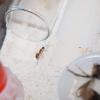I actually breed Tapinoma, Aphaenogaster, Stigmatomma, Prenolepis (although Preno from alates, not colonies) among a couple inbreeding species like Monomorium and certain Tetramorium. The latter are pretty well known, and I actually have videos and photos for the former three on the forum, or Instagram I believe
I plan to breed these ones in the near future (and I believe I've figured out) Wasmannia, Temnothorax, Myrmica, Pogonomyrmex, Manica, Tetramorium.
I've also had Lasius and Ponera flights occur in captivity
I will likely try certain Formica, Messor, Forelius, and Myrmecocystus, but I don't have any of the means to do it at the moment.
I'm still trying to polish some of the technique, and will likely release some guides in the future.
Some notes though:
- Lighting is SUPER important, both UV and some parts of the visible light spectrum have an effect (e.g. Tetramorium immigrans seem to start buzzing with UV, but I haven't figured what makes them start mating)
- There appear to be different triggers for swarming vs mating
- Captive breeding appears to be much much easier in a naturalistic setup, and much much much easier when you start from a colony, rather than alates
- For a bunch of species airflow seems to be a factor (particularly since queens "call" males). This could even be done with a very weak fan or a slightly airy room.
- Humidity is a big factor (unsurprisingly)
Each species seems to have different triggers, which is annoying, but light seems to be the most universal

















